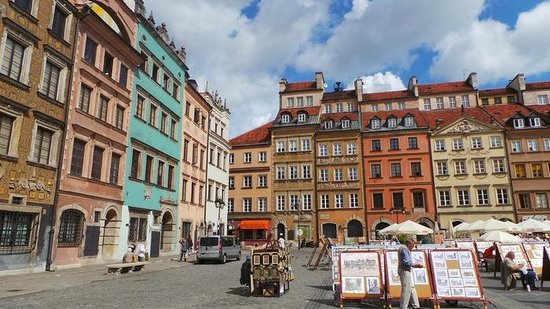
Auschwitz served as the venue for the award winning movie Schlinder’s list.
Located 60 kilometres west of Krakow in southern Poland, it has an area of 40 square kilometres and also an extensive prohibited area. The construction of Auschwitz I began under the first commander, Rudolph Hoss, in May 1940. The whole camp was surrounded by an electrically charged barbed wire fence. In October 1941, the building of Auschwitz II Birkenau was started. This much bigger camp included 250 wooden and stone barracks. The highest occupancy of Birkenau was planned as an extermination camp.
The Gate

‘Arbeit Macht Frei’ (work brings freedom) is the sign that was placed there by Major Rudolph Hoss, the camp commandant. A mockery and a false promise to the doomed inmates that self-sacrifice in the form of labour would bring spiritual freedom. Unfortunately the majority of them never made it out of the gates alive.
Uniform

Initially, the prisoner’s clothes consisted of blue-white striped drill garments. Usually male inmates received a shirt, long underpants, a jacket, trousers and possibly a coat during winter. In the spring of 1942, there were not enough garments for all the prisoners, so the uniforms were recycled, taken from gassed Jews and from killed Soviet prisoners of war. Most of the time, inmates suffered from insufficient, dirty and torn clothes.
Mug shots
In January 1945, as the Red Army drew closer, the SS evacuated the inmates. 405 000 inmates were counted with tattooed numbers, among them some 132 000 women. The count excluded those who had been immediately sent to the gas chambers. Those who were evacuated were made to do the ‘death march’ to other concentration camps. When the Red Army liberated the camp a week after the evacuation, there were some 5000 ill and dying inmates left behind. Today, all that remains of these people are the mugshots taken by the SS before their execution.
Gas canisters

The most efficient method to kill people was gassing them. Therefore the SS used ‘cyclone B’ which is a type of acid compound that evaporated at body temperature. It was used in a hermetically sealed room and death from suffocation occurred within a short period of time.
Once the doors of the gas chambers were closed, the gas would be discharged by the waiting disinfects through the vents in the ceiling. It could be observed through the peephole in the door that those who were standing nearest to the vents were killed at once. It can be said that about one-third died immediately. The remainder staggered around and began to scream and struggle for air. The screaming soon turned to a dead silence within a few minutes all in the room lay still.
Oven
After gassing, the bodies were taken up by elevator and laid in front of the ovens, which had been heated up. Depending on the size of the bodies, up to three corpses could be put into one oven at the same time. The time required for cremation took 20 minutes. One oven would have burnt more than 300 bodies per day. Each crematorium was estimated to burn almost 5000 bodies per day. The incomplete incinerated bodies which fell through the grill into the ash pit, were ground with wooden mortars along with the ashes then poured into pits near the crematorium. Next, they were removed from the pits and poured into the Vistula river of nearby ponds. At other times they were used to fertilise the fields of the concentration camps.
Holocaust

Auschwitz has become synonymous for the biggest crime of all mankind and is well documented. Auschwitz is the site where the planned and organised genocide took place, with at least 1.5 million innocent people from many countries who died, of which 90 per cent were Jews. The atrocities of the genocide cannot fully describe what the inmates had to face and go through everyday. If they were not directly murdered, then they probably died from starvation or worked until they died from exhaustion.
Even though I did not take upper secondary History which covered more in depth of World War II, a visit to Auschwitz concentration camp was enough to learn the whole chapter in a day, because the words on each information panel left a lasting reminder in my mind. There were some props left behind in the various rooms, of how they were used to torture the inmates and also I could feel the desolate fear of the people as they huddled in the rooms, waiting for their fate. It was such a horrible feeling and definitely an important lesson for everyone around the world to learn, so that we would not make the same mistake again. Every human life on Earth is precious, and no race is superior over another.











